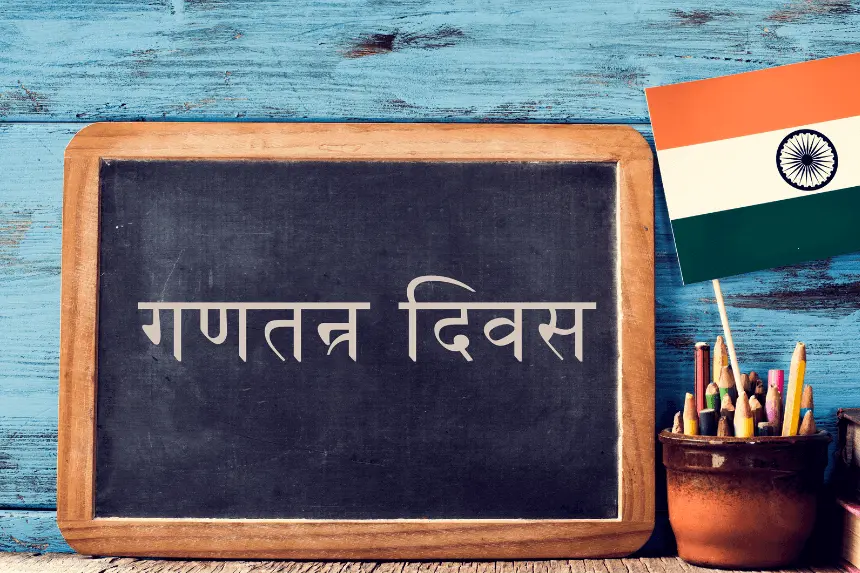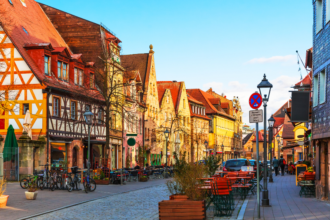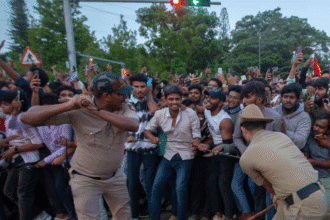In April, the government of Maharashtra announced that Hindi would be the third language to be taught in all state-run elementary schools. This choice was in line with India’s three-language formula, which is part of the National Education Policy (NEP). Its goal is to help students become fluent in more than one language. But the response to this change has not been smooth at all.
- How does language connect to regional identity in India?
- What part does education play in language politics?
- What are the political effects of this policy?
- Has This Argument Hurt Social Harmony?
- Is the Three-Language Formula Still Useful Today?
- What does the future hold for Maharashtra?
- Last Thoughts: Is it possible for India to accept unity without forcing everyone to be the same?
The problem has led to a lot of discussion, protests, and changes in the political landscape in Maharashtra. People who are against the Hindi language policy say that it hurts the Marathi identity of the state. Many people in this area, whose language is tightly related to culture and community pride, saw this choice as an unwelcome imposition.
Linguistic politics in India still affect regional speech, and the emotional impact of linguistic identification has become a major cultural and electoral issue again. Read another article on the International Student Limit in Australia
How does language connect to regional identity in India?
There are hundreds of languages and dialects spoken in India. After it became independent, the country reconfigured many of its states based on the most common languages in each region. Maharashtra, which was created in 1960, is one of these states where Marathi identity became the most important part of its culture.
In this case, language isn’t just a way to talk to each other; it’s also a reflection of history, belonging, and shared values. Because of this, any danger to the standing of the Marathi language is seen as a direct attack on the dignity of the region.
Critics believe that the time and way the Hindi language policy is being put into place don’t take into account the cultural sensitivities of states that don’t speak Hindi, like Maharashtra.
What part does education play in language politics?
The three-language formula was put in place in 1968 to make sure that Indian children study Hindi, English, and their regional language. In an ideal world, this plan would help bring people together and make the country more inclusive. But in practice, especially in places like Maharashtra, this strategy has caused concerns.
Teachers and parents say that making Hindi essential could take away from Marathi. This worry isn’t unjustified; in the past, regional languages have slowly lost their importance as national languages took control of the school curriculum.
Also, this policy comes at a time when cities like Mumbai are seeing a rise in Hindi-speaking people because of migration. As a result, Marathi-speaking people are becoming more and more uncomfortable because they are afraid of losing their language dominance in schools and other places.
These worries show how language politics in India affects not just schools but also the social and cultural life of communities.
What are the political effects of this policy?
Language-related problems have been utilized as political tools in Maharashtra for a long time. In the 1960s, the original Shiv Sena, led by Bal Thackeray, became well-known for supporting Marathi identity and fighting against non-Marathi migrants in Mumbai.
We are seeing something similar happen today. Political parties are once again using pride in language to get more support. The recent debate over the Hindi language policy has caused an unusual shift in politics. Uddhav Thackeray (Shiv Sena-UBT) and Raj Thackeray (MNS) are cousins who haven’t spoken to each other in almost 20 years. They got together to fight the policy. Their march was a sign of their commitment to safeguarding their language and culture.
This topic could change people’s minds before the municipal elections. Even if the alliance may not last, it shows how important the language issue is in politics.
Has This Argument Hurt Social Harmony?
Sadly, the effects of this language conflict have gone beyond politics. A number of recent events suggest that societal tensions are on the rise. Two women in Thane were reportedly attacked in April for not speaking Marathi. On another occasion, members of the Maharashtra Navnirman Sena (MNS) beat up a Mumbai security guard when he said he didn’t speak the language.
These scary things show how language politics in India can cause anger and break up communities. A lot of people are worried that this rising intolerance, which is being fed by political speech, could cause long-term problems in society.
In a country like India, which has many different cultures, it’s important to respect language differences. Policies that unintentionally put languages in order of importance jeopardize not just people’s rights but also the peace of communities with different languages.
Is the Three-Language Formula Still Useful Today?
The three-language formula was created at a time when keeping the country together was very important. But India in 2025 is more connected, more mobile, and more diverse than ever before. In today’s world, a strict language policy may not have the same effect as it used to.
Experts say that the formula should be more flexible. For example, schools should be able to choose a third language based on the requirements, interests, and demographics of their students. This would protect the benefits of being multilingual while honoring regional identities.
A more flexible policy will also help ease tensions in states like Maharashtra, where pride in language is quite strong.
What does the future hold for Maharashtra?
Maharashtra needs to take a balanced and open-minded approach to get over this deadlock. Before making big changes to the language, policymakers should talk to teachers, parents, and community leaders. It’s important to make sure that the Hindi language policy doesn’t hurt Marathi identity but instead helps it.
Students could be better prepared for success without losing touch with their cultural roots if they learned English, Marathi, and Hindi in high-quality classes. Also, public efforts that encourage people to respect and work with those who speak other languages can help ease the tension that has been building in recent weeks.
In the end, the purpose should be to utilize language to connect people, not keep them apart.
Last Thoughts: Is it possible for India to accept unity without forcing everyone to be the same?
The Hindi language policy debate in Maharashtra isn’t simply a problem in that state; it’s part of a bigger discussion in India about culture, identity, and education. Hindi is the most spoken language in India, yet the country’s strength is its many languages.
It’s hard to balance pride in your region with pride in your country, but it’s not impossible. Policies ought to be well thought out, open to everyone, and adaptable enough to fit the country’s diversity.
As citizens, we should promote conversation instead of division. True progress is achievable when communities are free to keep their own identities while also finding common ground.








